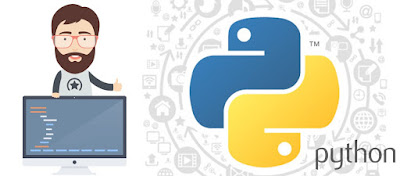Types of Data Structures in Machine Learning
So you’ve chosen to move
past canned calculations and begin to code your own machine learning
techniques. Perhaps you have a thought for a cool better approach for grouping
information, or possibly you are disappointed by the confinements in your most
loved measurable characterization bundle.
In either case, the better
your insight into information structures and calculations, the less demanding
time you’ll have when it comes time to code up.
The data structures utilized
as a part of machine learning are fundamentally not quite the same
as those utilized as a part of different regions of programming advancement.
Due to the size and trouble of a considerable lot of the issues, be that as it
may, having a truly strong handle on the nuts and bolts is basic.
Likewise, in light of the
fact that machine learning is an exceptionally numerical field, one should
remember how information structures can be utilized to take care of scientific
issues and how they are numerical questions in their own privilege.
There are two approaches to
characterize information structures: by their usage and by their operation.
By usage, the stray pieces
of how they are modified and the genuine stockpiling designs. What they look
like outwardly is less essential than what’s happening in the engine. For
information structures classed by operation or dynamic information sorts, it is
the inverse — their outside appearance and operation is more vital than how
they are actualized, and truth be told, they can for the most part be executed
utilizing various diverse inner portrayals.
Along these lines, the most
well-known sorts will be of the one-and two-dimensional assortment, relating to
vectors and frameworks separately, however you will periodically experience
three-or four-dimensional exhibits either for higher positioned tensors or to
assemble cases of the previous.
While doing framework
number-crunching, you should look over a bewildering assortment of libraries,
information sorts, and even dialects. Numerous logical programming dialects,
for example, Matlab, Interactive Data Language (IDL), and Python with the Numpy
augmentation are outlined principally to work with vectors and lattices.
Connected List
A connected rundown
comprises of a few independently allotted hubs. Every hub contains an
information esteem in addition to a pointer to the following hub in the
rundown. Additions, at steady time, are extremely proficient, however getting
to an esteem is moderate and frequently requires looking over a significant
part of the rundown.
Connected records are
anything but difficult to join together and split separated. There are numerous
varieties — for example, additions should be possible at either the head or the
tail; the rundown can be doubly-connected and there are numerous comparable
information structures in view of a similar rule, for example, the parallel
tree underneath:
Double Tree
A double tree is like a
connected rundown with the exception of that every hub has two pointers to
consequent hubs rather than only one. The incentive in the left tyke is
constantly not as much as the incentive in the parent hub, which thusly is
littler than that of the correct tyke. In this manner, information in paired
trees are consequently arranged. Both inclusion and get to are productive at
O(log n) all things considered. Like connected records, they are anything but
difficult to change into clusters and this is the reason for a tree-sort.
Stack
A stack is another
progressive, requested information structure like a tree aside from rather than
a flat requesting, it has a vertical requesting. This requesting applies along
the chain of command, yet not crosswise over it: the parent is constantly
bigger than the two its youngsters, however a hub of higher rank is not really
bigger than a lower one that is not specifically underneath it.
Imarticus
Learning is an esteemed institute which offers a number of industry
endorsed courses in both finance and analytics.



Comments
Post a Comment